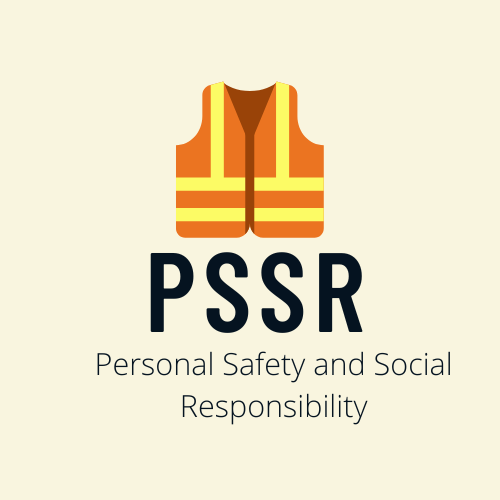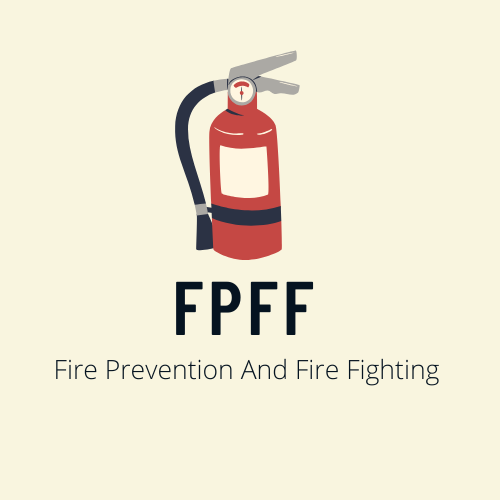RFPFF exit exam questions and answer quiz contain questions Answer
If you find any questions incorrect, please let us know by Clicking here.
1. Which dangerous condition should be kept in
mind after using a 15-pound CO2 fire extinguisher on a small oil fire on the
engine room floor plates?
Possible suffocation from the CO2 gas.
Forgetting to secure the engine room ventilation system.
CO2 gas being drawn into nearby engine or air compressor intakes.
Rekindling of the
fire.
2. Which of the
listed classes of fire is considered as one involving electrical equipment?
Class "A”
Class "B"
Class "C" •
Class "D"
3. Which of the
following would be considered a Class “B~ fire?
Electrical fire in a motor
Waste rag fire in the engine room
Oil fire in the
engine room bilges •
Fire in the main switchboard
4. If ignited, which material would be a class B fire?
Magnesium
Paper
Wood
Diesel Oil •
5. Which of the
listed extinguishing agents is NOT suitable for fighting a liquid paint fire?
Dry chemical
Foam
Water
Carbon dioxide
6. Which
extinguishing agent is most effective on a mattress fire?
CO2
Foam
Dry Chemical
Water •
7. The extinguishing agent most effective for combating wood fires Is
water •
carbon dioxide
foam
dry chemical
8. You are fighting a
fire in a watertight compartment using hoses and river water. Stability may be
reduced because of
progressive down flooding
reduction of water in the storage tanks
9. Increase In free
surface which reduces the metacentric height •
reduction of KG to the minimum allowable
10. When used to fight
fire, carbon dioxide.
is effective if used
promptly on an oil fire ♦
has a greater cooling effect than water
is lighter than air
is harmless to cargo and crew
11. Carbon dioxide as
a firefighting agent has which advantage over other agents?
It causes minimal
damage.
It is safer for personnel.
It Is cheaper.
It is most effective on a per unit basis.
12. To prevent the
spread of fire by convection you should
cool the bulkhead around the fire
remove combustibles from direct exposure
close all openings to
the area
shut off all electrical power
13. What is NOT a
characteristic of carbon dioxide fire-extinguishing agents?
Effective even if
ventilation is not shut down •
Will not deteriorate in storage
Non-corrosive
Effective on electrical equipment
14. What is NOT a
characteristic of carbon dioxide fire-extinguishing agents?
Effective even if
ventilation is not shut down •
Will not deteriorate in storage
Non-corrosive
Effective on electrical equipment
15. Foam extinguishes
a fire by.
destroying the burning materials
chemical reaction with the burning material
absorbing the burning material
smothering the
burning material
16. Immediately after
a class "B" fire has been extinguished by the use of foam, crewmen
should
carefully apply a low velocity fog over the foam blanket
wade through the foam blanket to evenly distribute the foam
be careful not to
disturb the foam blanket
sweep the foam blanket overboard and secure firefighting equipment
16. The most likely
location for a liquid cargo fire to occur on a tanker would be
in the midships house
at the main deck manifold
at the vent header
in the pump room •
17. You should be
most concerned about a possible explosion or fire in fuel tanks
during fueling when
the fuel first strikes the tank bottom •
during fueling when the fuel strikes fuel already in the tank
when underway as the fuel is moved by wave action
shortly after fueling when fuel vapors gather
18. You have carbon
tetrachloride as part of the cargo. If a fire breaks out in the general area,
what is the major danger from the carbon tetrachloride?
It will explode if exposed to a flame.
Phosgene gas may be
formed if it comes in contact with hot metal.
It will burn rapidly once Ignited.
You cannot use water to fight the fire because it will react with the carbon tetrachloride.
19. Radiation can
cause a fire to spread by.
transmitting the heat of a fire through the ship’s metal
burning liquids flowing into another space
heated gases flowing through ventilation systems
the transfer of heat
across an unobstructed space •
20. To prevent the
spread of fire by conduction, you should
cool the bulkheads
around the fire
remove combustibles from direct exposure
close all openings to the area
shut off all electric power
21. You notice smoke
coming from an open laundry room doorway. After activating the fire alarm,
which of the following would you do FIRST?
Attempt to determine
what is burning.
Acquire the nearest self-contained breathing apparatus.
Break out the nearest fire hose.
Wait for the fire team to arrive and assist as directed.
22. You are on watch at night in port and discover a fire in #1 hatch. Which action should you take FIRST?
Advise the Chief Mate and Master.
Release carbon dioxide into the hatch.
Sound the general
alarm.
Lead a fire hose to the hatch.
23. The spreading of
fire as a result of heat being carried through a vessel's ventilation system,
is an example of heat transfer by
conduction
convection •
radiation
24. Which of the
following is NOT identified on the vessel's fire control plan?
Gas detector
Fire control plan
Fire and emergency
signals *
Dry chemical monitor
25. The high velocity
fog tip used with the all-purpose firefighting nozzle should always be.
stowed separately in a clip or rack at each fire station
attached to the all-
purpose nozzle by a chain
•
coated with heavy grease to prevent corrosion
painted red to be identified as emergency equipment
26. The most common
and widely used cooling agent used for fighting fires on merchant vessels is
carbon dioxide
flue gas
water
steam smothering
27. The outlet at a
fire hydrant may be positioned anywhere from horizontal to pointing.
45° upward
vertically upward
vertically downward •
28. The primary function(s)
of an automatic sprinkler system is(are) to
extinguish the fire which triggers it
limit the spread of
fire and control the amount of heat produced •
protect people in the areas which have sprinkler heads
alert the crew to the fire
29. If a portable carbon
dioxide fire extinguisher has been partially discharged, it should be
immediately
tagged and restowed properly in its rack
weighed and the charge loss recorded before being returned to its rack
given to the chief engineer for recharging
tagged ’empty' and
stowed separately from charged extinguishers •
30. Which statement
about firefighting foam is TRUE?
Foam conducts
electricity.
To be most effective, foam should be directed at the base of the fire.
Foam is most effective on burning liquids which are flowing.
Foam can ONLY be used to extinguish class A fires.





